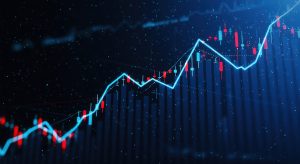The opportunities in Alternatives

As 2022 begins there’s plenty to be cautious about. Central Banks are starting to tighten monetary policy, energy prices are contributing to rising , economic growth is being impacted by Covid-19 variants and US midterm elections are scheduled for November. This is all happening against a backdrop of record high stock markets whose valuation, from some perspectives, could be compared to the 2000s internet bubble. We also have record-breaking temperatures:
2021 being confirmed as the 6th hottest year on record; the last 7 years being the hottest ever recorded.
nasa
So, what effect could all these events have on different asset classes? Rising inflation and
Interest rate
Fixed income
Duration
Interest rate
Equity
Equity
Biodiversity
“Alternatives” are a large asset class, traditionally associated with commodities and real estate. But the fundamental quality we look for at Tribe is diversification from the
of equities and bonds. Our expectation is that alternatives will be less
to
. This means they can improve the overall risk and return profile for our clients over the long term as they are intended to reduce overall portfolio
Volatility
There’s no ‘one size fits all’ approach available in alternatives and within our investible universe there are opportunities across the risk spectrum which can target different returns, liquidities and yields. As well as traditional sectors like real estate (where we focus on
Sustainability
Microfinance
Battery storage
Forestry
Social housing
Some alternatives, for example battery storage facilities, woodland or a basket of micro-loans, aren’t subject to short term economic forces. The biological growth from trees and the value of the timber will still happen if US equities fall. If the price of timber isn’t particularly attractive, trees that would have been harvested can be left in the ground. This is a big part of the appeal in alternatives: they can reduce volatility across a portfolio and can act as a buffer when traditional markets are volatile.
Many investors think inflation could cause markets to stutter in 2022. With some alternatives, however, there can be a degree of insulation given the underlying entities. They can also have higher dividends which, crucially, are index-linked (i.e. linked to inflation). Social housing in the UK is one example. Not only is it relatively well protected given local government pays the rent, these payments are also increased in line with inflation, unlike investing in most bonds, where you receive the same amount of money in real terms.
However, like any
Asset class
Liquidity
In the current environment, alternatives have become an increasingly important asset class for our portfolios given both their financial and impact driven characteristics. We consider them a good diversifier which can complement a broader portfolio with global equity exposure. Alternatives have the ability to offer total return potential, as well as inflation protection and income characteristics, which in the current market are becoming increasingly harder to find. Given the difficult market conditions for equities and
Fixed income
Risk-adjusted returns




